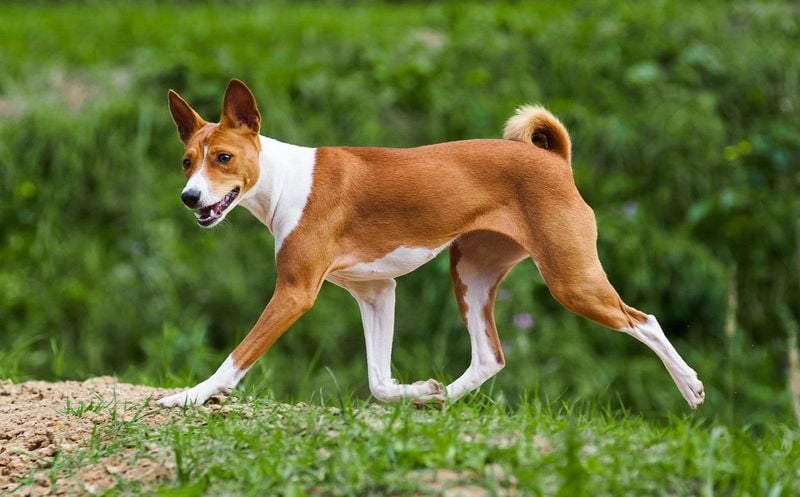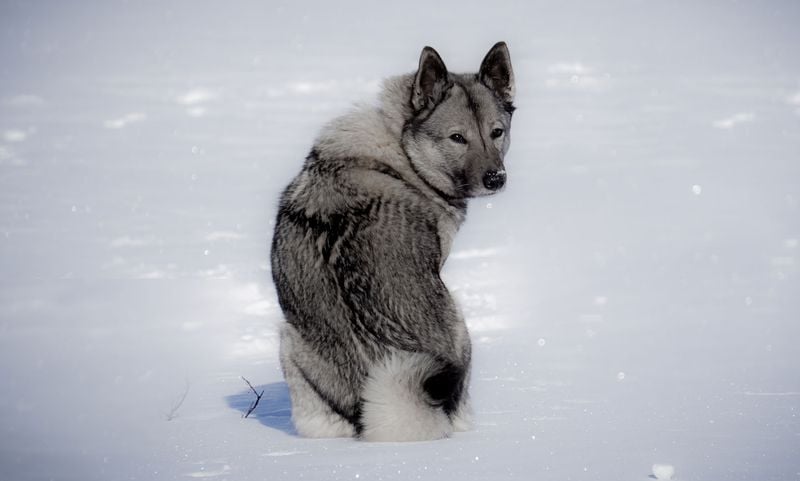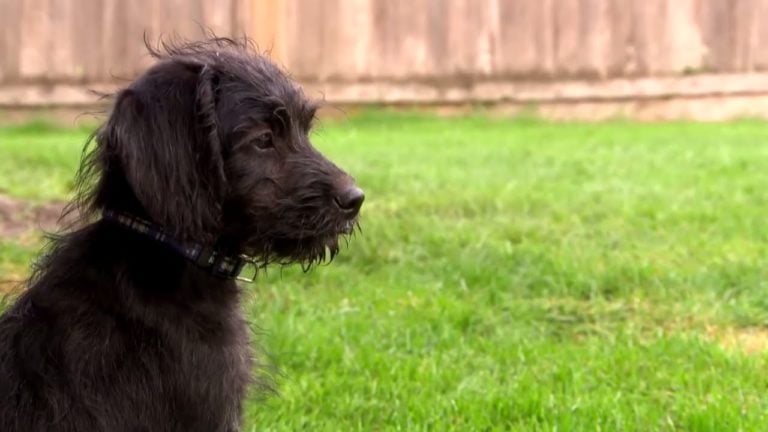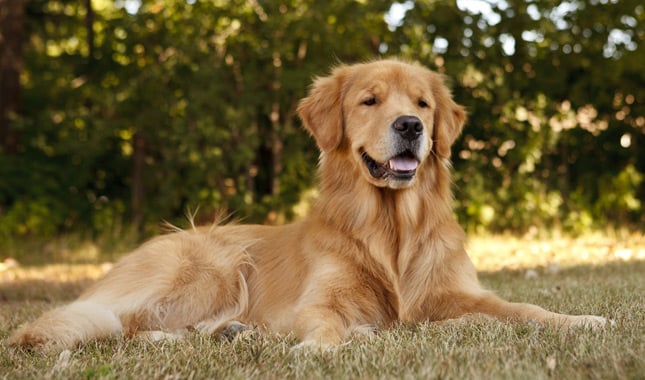These 14 Dog Breeds Could Totally Thrive in the Wild
Ever wondered which of our pampered pooches could actually survive if they had to fend for themselves? While most modern dogs depend on humans for food and shelter, some breeds still retain strong instincts from their wild ancestors.
These special dogs have the physical traits, intelligence, and survival skills that would help them adapt to life without humans. From harsh Arctic environments to scorching deserts, these remarkable canines possess what it takes to make it on their own.
1. Siberian Husky: Arctic Survivor
Born to endure extreme cold, Siberian Huskies possess a thick double coat that insulates against sub-zero temperatures. Their wolf-like hunting instincts remain surprisingly intact despite domestication.
These intelligent canines can track prey across vast distances and have the stamina to pursue food for miles without tiring. Their pack mentality would serve them well in the wild, allowing them to coordinate hunts and share resources.
Huskies require minimal food relative to their size and activity level – an essential adaptation for surviving periods of scarcity. Their powerful digging ability would help them create shelters and uncover small prey hiding beneath snow or soil.
2. Alaskan Malamute: Power and Persistence
Weighing up to 100 pounds of mostly muscle, Alaskan Malamutes were bred by the Mahlemut people to haul heavy loads across treacherous terrain. Their massive paws act like natural snowshoes, distributing weight evenly across snow and ice.
Unlike many domestic dogs, Malamutes retain strong prey drives and exceptional problem-solving abilities. They can dig through frozen ground to create shelters and have been known to break ice to access water sources.
Their thick coats include a water-resistant outer layer and dense insulating undercoat, allowing survival in temperatures as low as -70°F. These resourceful giants can slow their metabolism during food shortages – a critical wild survival trait.
3. German Shepherd: Master Tactician
Originally developed for herding and protection, German Shepherds possess exceptional intelligence that ranks among the top three of all dog breeds. Their ability to assess threats and adapt to changing situations would prove invaluable in wilderness settings.
These versatile dogs have the speed to chase down prey and the strength to take down animals considerably larger than themselves. Their balanced diet preferences would allow them to survive on everything from small rodents to berries and plants.
German Shepherds form tight social bonds, meaning they could establish effective wild packs for hunting and protection. Their weather-resistant double coat provides adequate protection in various climates, while their keen senses can detect predators or prey from remarkable distances.
4. Canadian Inuit Dog: Ancient Survivor
One of North America’s oldest indigenous breeds, the Canadian Inuit Dog has been helping the Inuit people survive in the Arctic for over 4,000 years. Remarkably unchanged by modern breeding, these dogs maintain nearly all their wild survival instincts.
Their unique metabolism efficiently processes high-fat diets, perfect for the limited food sources available in Arctic regions. Females can actually delay pregnancy during harsh conditions – a rare adaptation among domestic dogs.
Inuit Dogs can withstand temperatures of -50°F without shelter and have been known to break through ice to catch fish. Their thick, almost bear-like coats provide insulation even when wet, while their broad paws distribute weight perfectly across snow and ice.
5. Akita Inu: Fearless Hunter
Revered in Japan for centuries, Akitas were originally bred to hunt large game including bears and boars. Their powerful jaws and stocky build make them formidable predators capable of taking down animals many times their size.
Akitas possess exceptional cold tolerance thanks to their thick double coats and oily outer fur that repels water and snow. Their webbed feet provide advantages both in snow and water, allowing them to traverse diverse terrains.
Known for their independence and resourcefulness, Akitas can problem-solve without human direction. They’re naturally territorial and maintain strong protective instincts, which would help them defend resources and establish territory in the wild. Their incredible sense of smell would aid in tracking prey across vast distances.
6. Tibetan Mastiff: Mountain Guardian
Evolving in the harsh Himalayan highlands, Tibetan Mastiffs developed exceptional adaptations for survival in extreme conditions. Their massive size – often exceeding 150 pounds – provides the strength needed to confront predators like wolves and snow leopards.
Their extraordinarily thick double coat grows even denser during winter months, creating natural insulation against temperatures that regularly plummet below freezing. These intelligent guardians possess remarkable night vision and can see clearly in near-total darkness.
Tibetan Mastiffs naturally conserve energy, moving deliberately and eating surprisingly little for their size. Their territorial nature would help establish and defend hunting grounds, while their powerful sense of smell would detect both prey and threats from impressive distances.
7. Shiba Inu: Agile Forager
Don’t let their cute appearance fool you – Shiba Inus were bred as tenacious hunters in the mountainous regions of Japan. Their cat-like agility allows them to navigate dense underbrush and rocky terrain with ease.
Shibas possess exceptional sensory abilities, particularly their hearing and smell, which would help them detect both predators and prey in the wild. Their compact size is actually an advantage, requiring less food while maintaining impressive speed and stamina.
Unlike many domestic dogs, Shibas groom themselves meticulously like cats, reducing parasites and maintaining coat health without human intervention. Their independent, sometimes stubborn nature demonstrates a self-reliance that would serve them well when making survival decisions in the wilderness.
8. Canaan Dog: Desert Specialist
The Canaan Dog represents one of the rare breeds that has already proven its wild survival abilities. When the Romans destroyed Jerusalem in 70 CE, many of these dogs escaped to the Negev Desert where they survived independently for nearly 2,000 years!
Their light-colored coats reflect heat while providing adequate warmth during cold desert nights. Remarkably efficient water conservers, Canaan Dogs can extract maximum moisture from minimal food and water sources.
These medium-sized dogs possess extraordinary intelligence and problem-solving skills, allowing them to adapt to changing environments. Their alert nature and exceptional hearing would help them detect predators from great distances, while their moderate size balances energy needs with hunting capability.
9. Basenji: Silent Stalker
Known as Africa’s “barkless dog,” the Basenji hunted alongside humans in the Congo for thousands of years. Their unique vocalization – a yodel-like sound instead of barking – evolved to prevent alerting prey during hunts.
These highly intelligent hunters can climb trees to escape predators or track prey, a rare ability among canines. Their short, fine coats help regulate body temperature in hot climates while minimizing parasite attachment.
Basenjis possess exceptional eyesight, able to spot movement from remarkable distances across open terrain. Their catlike grooming habits reduce odor, making them harder for both prey and predators to detect. With minimal body fat and extremely efficient digestion, they can thrive on smaller meals than many similarly-sized breeds.
10. Carolina Dog: America’s Wild Canid
Often called “American Dingoes,” Carolina Dogs represent one of the few breeds that regularly revert to wild living even today. Packs continue to survive independently in remote areas of Georgia and South Carolina, hunting and breeding without human intervention.
Their distinctive hooked tails serve as communication tools within packs, while their almond-shaped eyes provide excellent peripheral vision for detecting threats. Carolina Dogs instinctively dig small, snout-sized holes to hunt prey hiding underground.
Female Carolina Dogs synchronize their breeding to environmental conditions, a rare wild adaptation. Their diet flexibility allows them to consume everything from small mammals to berries and fish. These resourceful canines construct sophisticated dens for shelter and whelping, complete with escape tunnels and camouflaged entrances.
11. Belgian Malinois: Endurance Athlete
Developed as versatile working dogs, Belgian Malinois possess an extraordinary combination of intelligence, athleticism, and drive. Their lean, muscular bodies can maintain running speeds of 30 mph while covering 50+ miles daily without fatigue.
Malinois have exceptional problem-solving abilities, regularly figuring out complex puzzles that would challenge primates. Their prey drive remains intense, with natural instincts for tracking, chasing, and capturing food sources.
These dogs require remarkably little food relative to their activity level, an efficiency that would prove valuable during lean times in the wild. Their short coats adapt to various climates while requiring minimal maintenance. With their incredible jumping ability – often clearing 8-foot barriers – they could easily escape larger predators or access difficult terrain.
12. Kangal: Predator Among Predators
Turkey’s legendary livestock guardians, Kangals were developed to protect flocks from wolves, bears, and even lions without human assistance. Their massive size – males regularly exceed 140 pounds – gives them the physical presence to deter large predators.
Kangals possess one of the strongest bite forces of any dog breed at over 700 PSI, stronger than many wild predators. Their thick neck skin evolved specifically to protect vital areas during confrontations with wolves.
Despite their size, Kangals move with surprising speed and can maintain pursuit over long distances. Their short, dense coats adapt to both scorching summers and freezing winters in Turkey’s harsh climate. Remarkably independent thinkers, Kangals make complex decisions without human direction – a crucial ability for wilderness survival.
13. Norwegian Elkhound: Northern Tracker
For over 6,000 years, Norwegian Elkhounds have hunted alongside Vikings and Nordic tribes, maintaining most of their primitive traits. Their compact, spitz-type bodies conserve heat efficiently while allowing remarkable agility in deep snow and rough terrain.
Elkhounds possess exceptional tracking abilities, following scent trails for days through challenging weather conditions. Their hunting style involves finding large game like moose and bears, then barking to hold them in place – a technique that could be adapted for solo hunting.
Their gray, weather-resistant double coats provide excellent camouflage in northern forests while shedding snow and repelling moisture. Elkhounds instinctively conserve energy when food is scarce, a critical wild survival adaptation. Their extraordinary night vision would give them hunting advantages during the long dark winters of northern latitudes.
14. Anatolian Shepherd: Desert Survivor
Evolved in the harsh Turkish steppes, Anatolian Shepherds have guarded livestock independently for over 6,000 years. Their massive frames – often exceeding 150 pounds – provide both the strength to confront predators and the endurance to patrol vast territories.
Anatolians require surprisingly little water and food relative to their size, a crucial adaptation for survival in arid regions. Their thick double coats adapt seasonally, providing insulation against both freezing winters and scorching summers.
These independent thinkers make complex decisions without human guidance, assessing threats and determining appropriate responses. Their territorial nature would help establish and defend hunting grounds in the wild.
Anatolians possess exceptional night vision and hearing, allowing them to detect potential threats or prey from remarkable distances even in complete darkness.




















